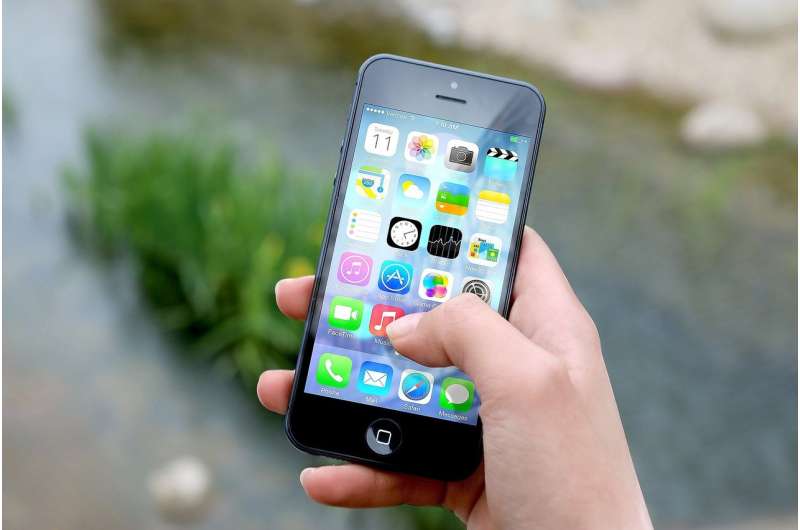Smartphones: Are they just a pain in the neck?

A large majority of the world's 3.4 billion smartphone users are putting their necks at risk every time they send a text, according to new research involving the University of South Australia.
'Text neck,' as it is colloquially called, places stress on the spine and alters the neck's natural curve, increasing the likelihood of associated soft tissue discomfort.
A recent international study published inPLOS One, highlights the high ergonomic risks to聪明的phone users, particularlyyoung people, who are experiencingneck painearlier than previous generations.
Researchers from Khon Kaen University video recorded 30聪明的phoneusers in Thailand aged between 18-25 years, who spend up to eight hours a day on their phones.
Using a Rapid Upper Limb Assessment tool (RULA) to measure ergonomic risk levels, they found that the average score for the participants was 6, compared to an acceptable score of between 1-2.
"The results identified issues with unsuitable neck, trunk and leg postures which lead to musculoskeletal disorders," says lead researcher Suwalee Namwongsa.
RULA has been used to assess the ergonomic impacts of desktop computers and laptops in the past but this is believed to be the first time the tool has been used to assess ergonomic risk levels of excessive smartphone use.
Dr. Rose Boucaut, a UniSA physiotherapist involved in the paper, says the awkward postures adopted by smartphone users can adversely affect the soft tissues.
"Smartphone users typically bend their neck slightly forward when reading and writing text messages. They also sometimes bend or twist their neck sideways and put their upper body and legs in awkward positions," Dr. Boucaut says. "These postures put uneven pressure on the soft tissues around the spine, that can lead to discomfort."
In a separate study published this month in the journal WORK, the same researchers also surveyed 779 Thai university students who use smartphones, with 32 per cent reporting neck pain, 26 per cent shoulder pain, 20 per cent upper back pain and 19 per cent wrist and hand pain.
Musculoskeletal disorders were more common among students with higher smartphone use (more than five hours a day) and those who smoked and did little exercise.
Female smartphone users also experienced far more musculoskeletal disorders than men – 71 per cent compared to 28 per cent.
This study is the first to show the association between smoking, smartphone use and neck pain. Of the 11 students who identified themselves as current smokers, nine of them hadmusculoskeletal disorders. The low number of smokers reflects the no-smoking policy of the Khon Kaen University.
Previous clinical studies have demonstrated that cigarette smoking is harmful not only to lungs but also to soft tissues, decreasing healing time at a cellular level.
Dr. Boucaut says the findings should be communicated tohealth professionalswho treat people with neck and back pain and may not always link their symptoms to smartphone use.
"It is also doubtful whether people experiencing back and neckpain(especially young people) are aware it could be as a result of excessive smartphone use," Dr. Boucaut says. "Health practitioners need to educate their patients about safe postures and curtailing time spent using smartphones to help prevent these issues."
一些智能手机公司现在发送unsolicited messages to their customers notifying them of their average time spent on daily smartphone use.
"This feedback may help users connectneckdiscomfort with smartphone use and encourage them to reduce time spent texting," Dr. Boucaut says.
Explore further


















User comments